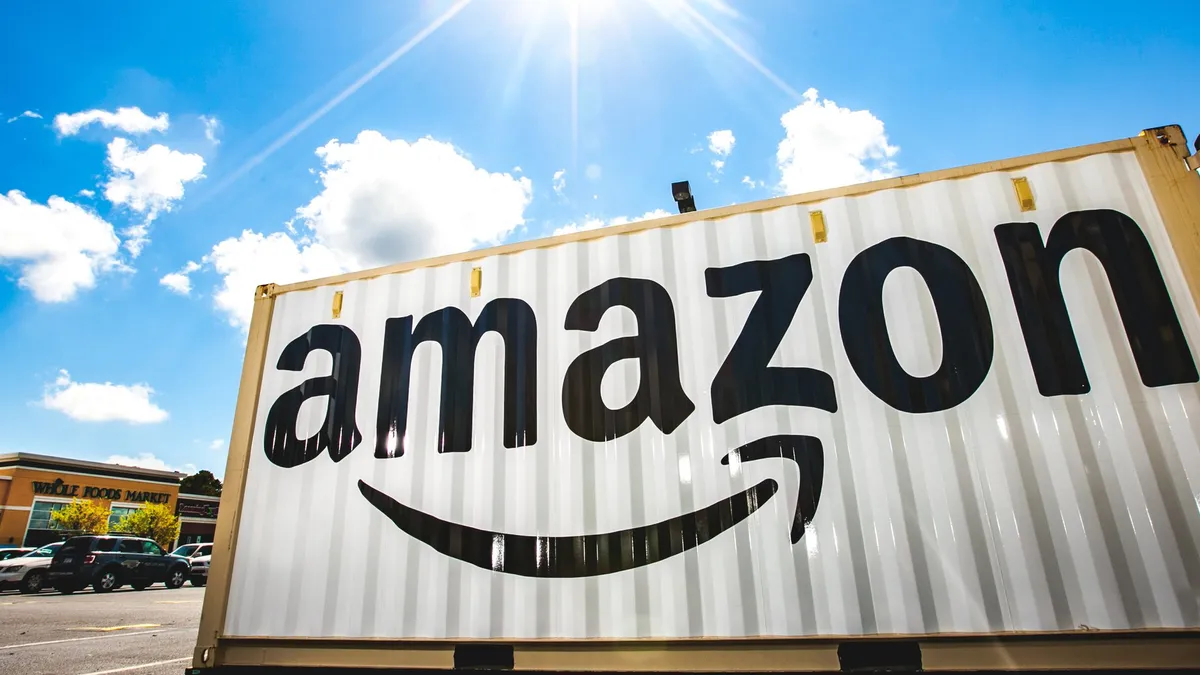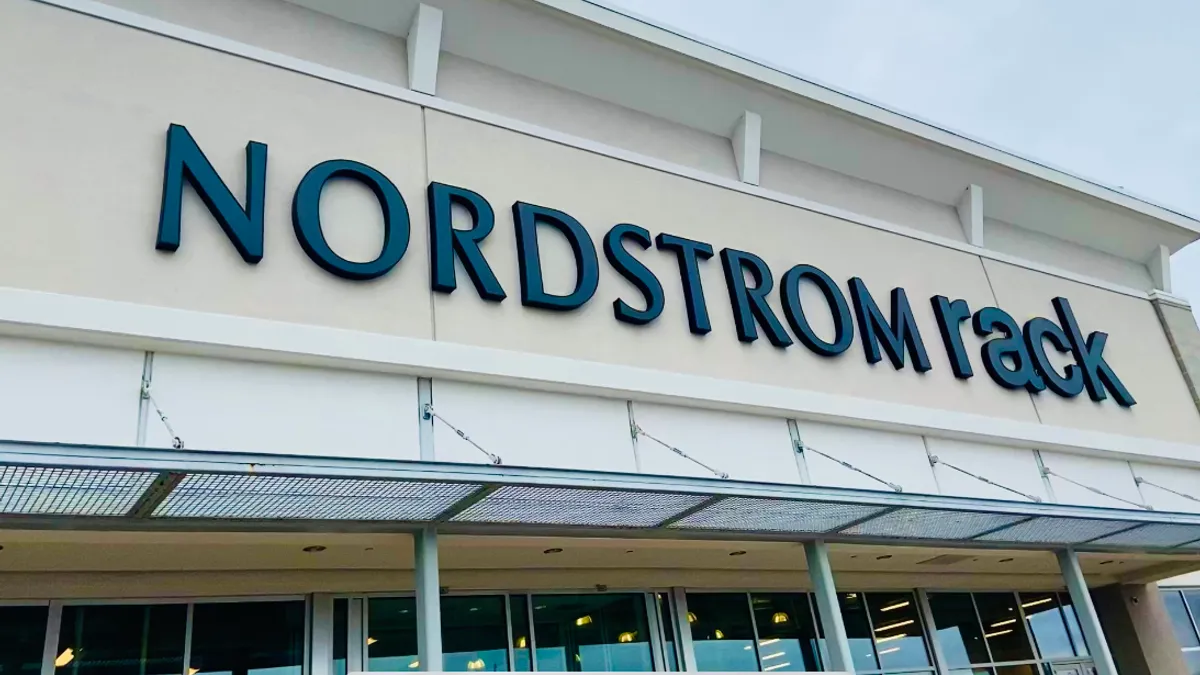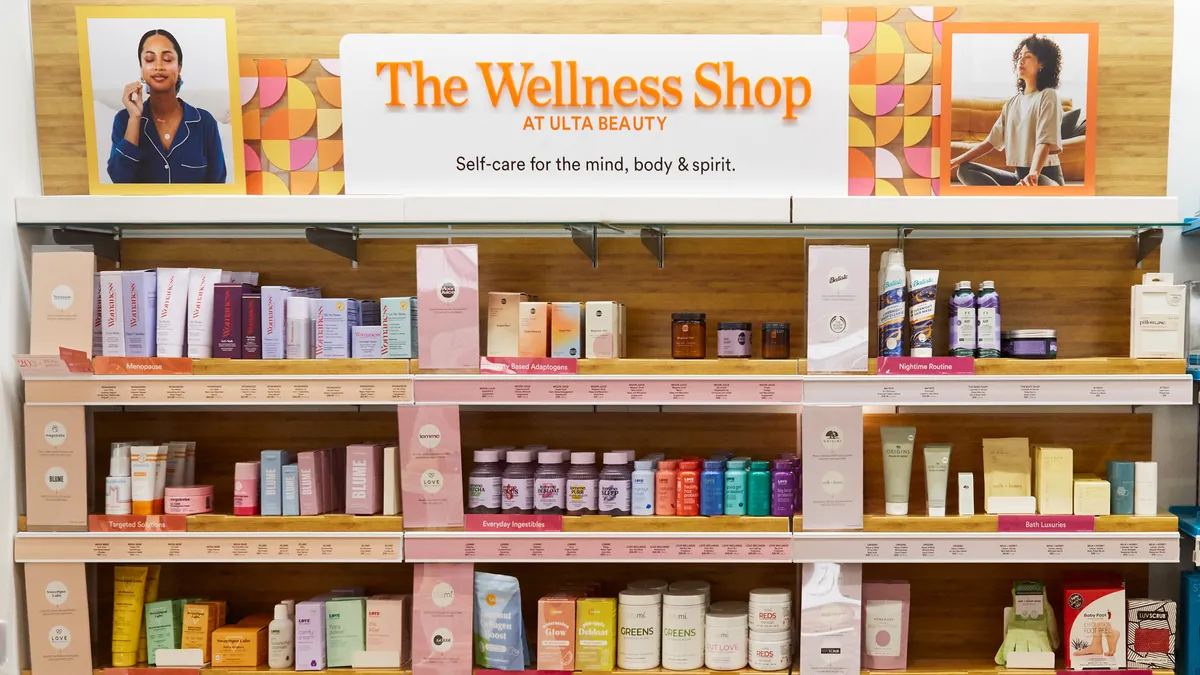Top-drawer, lovely, unique, stunning — even genuine — don't seem like the adjectives that push shoppers to Amazon to buy something. "Inexpensive" and "fast" almost certainly are, though, and that's been enough to shake up the retail industry for the past two decades.
The Amazon flywheel — the business strategy that helped the company grow from an online bookseller in 1994 to "the everything store" today — is fueled by diligently keeping a three-pronged promise to its customers, at least those who are Prime members. The company offers a trifecta of price, selection and convenience to entice shoppers.
That has allowed it to capture, by some estimates, nearly half of all online sales in the U.S. But the company's strengths are well documented: Amazon employs nimble price-matching algorithms, nurtures a growing third-party Marketplace that makes for a vast selection (eclipsing even Walmart's), and seems intent on making delivery not only free but also faster than ever.
"Amazon's view is that all they're doing is responding to consumers' needs," Brendan Witcher, principal analyst at Forrester Research, told Retail Dive in an interview, adding that Amazon Go is probably the company's most disruptive retail innovation so far. "I mean, one of the biggest pain points in physical retail, which is checkout, was solved by an online retailer."
But, where exactly does "quality" fit into Amazon's value proposition?
Price
"Value" means different things to different people, and for many it includes not just price, or delivery speed, but quality relative to price. Amazon has demonstrated a ferocity in maintaining a price edge on exact or like items, in categories from consumer products to apparel. The company keeps tabs on prices in the market in order to beat competitors while staying close to the knife's edge to protect its margins, research shows. (Amazon didn't return Retail Dive's request for comment on this article.)
Two years ago, the e-retailer was handily beating top competitors on price, according to research from Profitero, with Target's prices in particular 16.9% more expensive than Amazon and Jet 12.3% more (with Walmart coming closer). But the gap is closing, at least in some categories. According to a forthcoming Profitero report on 12,500 products across 16 categories, Walmart, Walmart's Jet unit and, to a lesser extent, Target, came much closer to Amazon, at least on toys and games. Walmart items in that category on average were 1.7% more expensive than on Amazon, while Jet's were 2.9% more and Target's were 5% more, according to preliminary Profitero data provided to Retail Dive.
"I was saying on webinars two years ago, as our data was showing that the price wars were intensifying and getting harder for Walmart and Amazon to make money, that [retailers] should compete on things that offer value other than always relentlessly lowerings prices, which just doesn't end well for anybody," Keith Anderson, Profitero senior vice president of strategy and insights, told Retail Dive in an interview.
As the Marketplace has grown, Amazon has sought ways to maintain its competitiveness. It was forced to abandon one avenue in March — a proviso that sellers mustn't sell anything more cheaply anywhere else, including on their own websites — after objections were raised by Sen. Richard Blumenthal (D-Connecticut) and others based on anti-competitive concerns. Amazon continues to entice sellers with "Sold by Amazon," however, whereby Marketplace prices are set by Amazon's price automation process, and Amazon makes up any difference if the price falls below a seller's ideal point.
Selection
Amazon's selection is vast, a likely reason that its site is a common launching pad for product searches, overtaking even Google. As of April this year, Amazon listed 119,928,851 items for sale, according to data company Scrapehero. Its biggest category remains books, but electronics came in second at a whopping 10.1 million products.
The company's ability to offer all that owes much to its Marketplace, which is responsible for moving 58% of goods sold on its site. That will likely only increase as Amazon pushes more of its vendors onto its third-party platform.
“I think the Marketplace is growing, and it is growing a little faster than 1p, but it's still just over half,” Anderson said. “It's not 70% or 80%. I'd love to know what balance Amazon would consider optimal.”
But it can be difficult to discern which products offer good value because, especially in some categories, product reviews can be confusing and poor quality products can proliferate.
Convenience
While Amazon has greatly challenged rivals with its price hardball, it's probably been even more disruptive with its speedy no-cost fulfillment.
The company says it provides its Prime members with free two-day shipping on more than 100 million items, and earlier this year said it's speeding that up to one day, at least for some of them. That brought gains almost immediately, bringing on new Prime members, according to GlobalData Retail research.
That's in part because convenience is the number one issue for U.S. consumers, many of whom struggle to attain or maintain a spot in the middle class with at least two incomes and don't have a lot of extra time to shop. With Walmart and Target rising to the challenge with various in-store pickup and delivery options, consumer expectations here have been reset, according to Alice Fournier, vice president of e-commerce and digital at Kantar Consulting.
Quality
So, what about quality? This is one area where its Marketplace may not be helping.
Amazon is turning to its sellers to help it expand selection, is working with them on pricing, and many use Amazon's fulfillment operations to join in the convenience play. But its expansion is also causing headaches, as more fake or otherwise subpar goods get through.
For two years running, the American Apparel & Footwear Association has gone so far as to recommend that the U.S. trade office flag some of Amazon's websites as "notorious markets" for their proliferation of counterfeit goods, raising objections that include the U.S. site, its largest. For its part, Amazon says it goes "well beyond our legal obligations and invest[s] heavily in proactive efforts to prevent counterfeits from ever reaching our stores," and said it stands behind all products sold on the site "even when third-party sellers do not."
Some items, notably beauty (where expired or tainted goods are sold by some resellers, according to JungleScout) and electronics (where items like photo supplies and printer ink proliferate in the gray and black markets), are particularly vulnerable. Substandard products in those categories can slip by, according to Pacvue President Melissa Burdick.
"I'm not one of these people who believes that Amazon is going to swallow the world ... But Amazon is only half of today's equation for a retail selling environment, and they know it."

Brian Kilcourse
Managing Partner, RSR Research
Burdick, who previously spent time as an Amazon executive and now works with Marketplace sellers, described how, even as Amazon works to kick bad actors off the Marketplace, many return under different accounts. And as Amazon gets more aggressive, some legitimate sellers, with legit products, get ensnared. "Amazon has ... a lot of programs to combat this, but it's just such a hard problem to fix at scale," she said in an interview. "I think that ultimately they'll solve it with their constant testing and implementation."
Reviews have also become "incongruous" to many Amazon customers because the reviews don't always line up with actual sellers of various products, creating a "mish-mash of accurate and inaccurate information," she said. That can also undermine consumer trust around quality. It all represents a rare vulnerability for Amazon.
"If I were a competitor I'd be all over that," Burdick said.
The e-commerce giant does keep its focus on the customer, however, she noted. That includes making returns easier than ever, through partnerships with Kohl's, UPS and others. "I do think that Amazon is trying to make it easier to return things, so you can take a risk," she said, although different sellers have different policies.
"Amazon's pillars are convenience, value and selection," she also said, adding that the company works on several fronts to improve all aspects of their customer experience. "They also have frictionless payments, and you've got this returns thing where you can just drop it off without packing it. But are they losing trust in those categories — yes. If you look at Walmart, they're being a lot more restrictive than Amazon and trying to qualify their sellers [better]. But to do that at scale is just a very complicated problem."
It's not likely to go away. Aside from commodity products, which are more likely to win on price and price alone, shoppers remain discerning and concerned about quality, according to Brian Kilcourse, managing partner at RSR Research. That's a major reason why most buying and selling continues to be conducted between brick and mortar walls, so that shoppers can check out the merchandise.
The retailer may also be missing or ignoring the ethical and sustainability concerns among consumers, especially younger ones, in light of evidence recently uncovered by the Wall Street Journal that its apparel is produced in factories not covered by industry agreements forged after a devastating 2013 factory fire in Bangladesh that killed more than a thousand people.
"I'm not one of these people who believes that Amazon is going to swallow the world. Amazon does many things that are interesting, they're very disruptive and not afraid to experiment and fail," Kilcourse told Retail Dive in an interview. "But Amazon is only half of today's equation for a retail selling environment, and they know it. It's inherent in the Amazon Go experience — they recognize that the store has a role. In the long history of humans shopping for things, we now carry the store around in our pockets. But consumers haven't given up their discriminating behaviors and in fact they're using their tools to be as discriminating as possible."





















